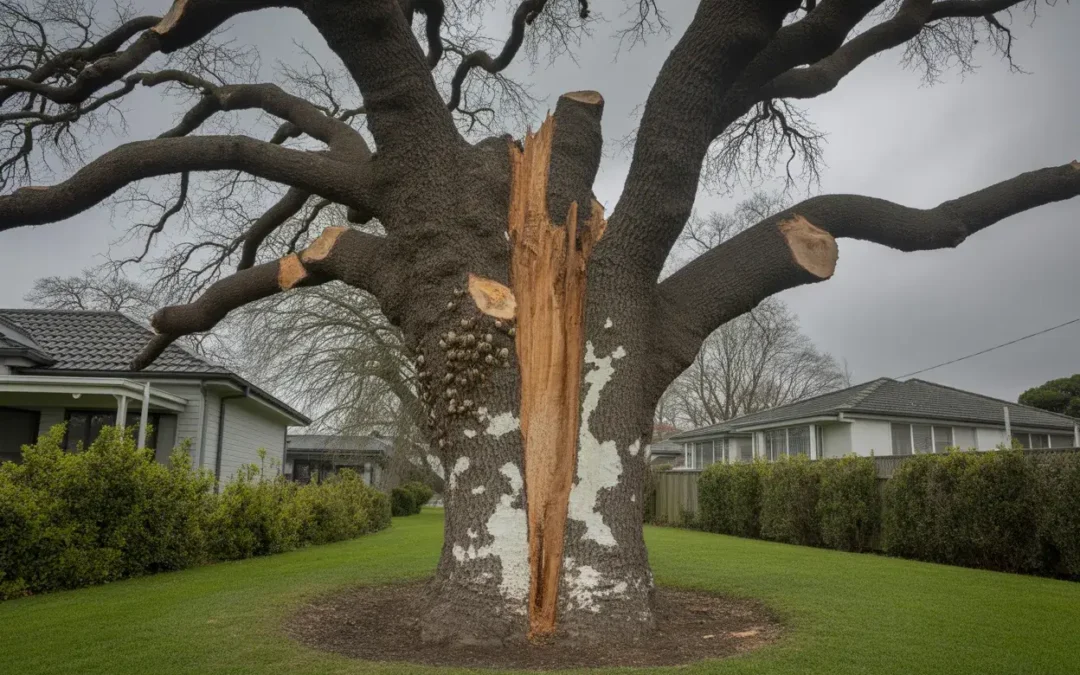When your treasured trees need professional care in Paraparaumu, understanding the role of a qualified tree surgeon becomes essential for maintaining healthy, safe, and beautiful trees that enhance your property. From the magnificent pōhutukawa gracing our coastal properties to the established exotic species providing shade and shelter, professional tree surgery combines specialised knowledge with practical expertise to address complex tree care challenges.
Tree surgeons, also known as arborists, bring technical qualifications and hands-on experience to tree care that extends far beyond basic gardening services. Their work encompasses everything from precision pruning and disease diagnosis to complex removals and emergency storm damage response, all whilst maintaining safety standards and working within Kapiti Coast District Council regulations.
Elite Arboriculture provides qualified tree surgery services throughout Paraparaumu and the wider Kapiti region, combining international certifications with deep local knowledge of our coastal conditions. This comprehensive guide explores what tree surgeons do, when their expertise becomes essential, and how professional tree surgery protects your valuable green assets whilst ensuring safety for your property and community.
Key Takeaways
- Tree surgeons are qualified professionals holding New Zealand Certificate in Horticulture Services (Level 4) or higher in arboriculture
- Professional tree surgery includes diagnostic assessment, technical pruning, disease management, and complex removals requiring specialised equipment
- Coastal conditions in Paraparaumu create unique challenges requiring local expertise and adapted techniques
- Situations requiring tree surgeon expertise include large tree work, proximity to power lines, structural concerns, and protected tree management
- Qualified tree surgeons maintain comprehensive insurance, safety certifications, and ongoing professional development
- Council regulations for notable trees and indigenous vegetation necessitate professional assessment and documentation
Understanding the Tree Surgeon Profession in New Zealand
Qualifications and Professional Standards
Tree surgeons in New Zealand operate under regulated qualification frameworks that ensure competency in both theoretical knowledge and practical application of complex arboriculture techniques.
The New Zealand Certificate in Horticulture Services (Level 4) with arboriculture specialisation represents the foundational qualification for professional tree surgeons. This industry-standard certification covers tree biology, climbing techniques, pruning methodology, pest and disease identification, and safety protocols essential for competent tree care.
Advanced practitioners pursue Level 5 certifications and the New Zealand Diploma in Arboriculture (Level 6), which provide expertise in tree risk assessment, advanced rigging techniques, and consultancy-level knowledge. These higher qualifications enable tree surgeons to tackle complex problems including heritage tree preservation and detailed technical assessments.
International Society of Arboriculture (ISA) Certified Arborist credentials add global recognition to New Zealand qualifications. This voluntary certification demonstrates commitment to professional excellence and requires ongoing education to maintain, ensuring practitioners stay current with evolving best practices.
Apprenticeship pathways combining supervised practical experience with structured learning provide alternative routes to qualification. These programmes typically span 28 months and enable aspiring tree surgeons to earn whilst developing competencies under experienced professionals.
Continuing professional development maintains and updates knowledge throughout a tree surgeon’s career. Regular requalification, workshops, and industry seminars ensure professionals remain current with new techniques, equipment developments, and regulatory changes affecting tree care practices.
Elite Arboriculture’s team maintains current certifications and participates in ongoing professional development, ensuring your Paraparaumu trees receive care from qualified professionals committed to excellence.

Essential Skills and Specialised Knowledge
Professional tree surgeons combine physical capabilities with technical knowledge to safely and effectively manage complex tree care situations that would overwhelm general gardening services.
Tree climbing expertise enables safe access to canopy heights using ropes, harnesses, and specialised rigging systems. Advanced climbing techniques allow precise positioning for selective pruning cuts whilst maintaining safety margins around hazards including dead branches and power lines.
Chainsaw operation skills extend beyond basic cutting to include specialised techniques for different situations including precise dismantling cuts, sectional removal, and controlled felling. Professional chainsaw work requires understanding cutting physics, wood behaviour, and safety protocols protecting both the operator and surrounding property.
Tree biology knowledge informs appropriate interventions that support rather than compromise tree health. Understanding growth patterns, wound response mechanisms, and stress factors enables tree surgeons to make informed decisions about pruning timing, cut placement, and intervention intensity.
Disease and pest diagnosis capabilities identify problems early when treatment options remain most effective. Professional assessment distinguishes between cosmetic issues, manageable problems, and serious threats requiring immediate intervention to prevent tree loss or safety hazards.
Risk assessment expertise evaluates structural integrity, failure potential, and hazard severity. Qualified tree surgeons identify compromised branches, weak attachments, and decay patterns that may not be obvious to untrained observers, enabling proactive management of safety concerns.
Specialised equipment operation including elevated work platforms, wood chippers, and rigging systems requires training and experience for safe, efficient use. Professional tree surgeons maintain equipment in optimal condition whilst understanding operational limits and safety requirements.
Comprehensive Tree Surgery Services in Paraparaumu
Diagnostic Assessment and Tree Health Evaluation
Professional tree health assessment forms the foundation for appropriate interventions, identifying problems whilst developing care strategies tailored to individual tree needs and property circumstances.
Visual inspection techniques identify obvious problems including dead branches, pest infestations, and structural defects. Experienced tree surgeons recognise subtle symptoms that may indicate developing problems requiring monitoring or early intervention.
Structural assessment evaluates branching patterns, attachment strength, and load distribution. Professional evaluation identifies potential failure points including codominant stems, included bark, and overextended branches that may require corrective pruning or support systems.
Species identification ensures appropriate care recommendations that respect individual tree requirements. Professional knowledge of both native New Zealand species and common non native varieties enables targeted approaches that work with natural growth patterns.
Soil and site analysis considers growing conditions affecting tree health including drainage patterns, compaction issues, and nutrient availability. Understanding site limitations helps identify whether problems stem from environmental factors rather than tree defects.
Disease diagnosis requires knowledge of common pathogens affecting Kapiti Coast trees. Professional identification enables targeted treatment recommendations whilst distinguishing between treatable conditions and terminal decline requiring removal for safety.
Documentation and reporting provide property owners with clear information about tree condition, recommended actions, and priority levels for different interventions. Professional assessments support informed decision-making whilst creating records useful for insurance purposes and council compliance.
Technical Pruning and Canopy Management
Precision pruning represents core tree surgery work, requiring technical knowledge to achieve objectives whilst maintaining tree health and structural integrity through proper technique application.
Structural pruning develops strong frameworks in young trees, establishing branching patterns that reduce future maintenance needs whilst building resilience against Paraparaumu’s coastal wind conditions. Early intervention prevents problems that might require major corrective work later.
Crown reduction techniques manage tree size whilst maintaining natural form and avoiding topped appearances that compromise both aesthetics and tree health. Professional reduction work carefully selects cuts that direct growth appropriately whilst preserving the tree’s characteristic shape.
Deadwood removal eliminates hazardous material that could fall and cause injury or property damage. Professional assessment identifies truly dead material whilst preserving living branches that may appear compromised to untrained observers.
Thinning operations improve light penetration and air circulation whilst reducing wind resistance in exposed coastal locations. Selective removal of crossing branches and excess growth maintains healthy canopy density without creating stress through over-pruning.
Formative pruning guides development of young trees, establishing strong structure whilst maintaining species-appropriate forms. Professional shaping during establishment years creates foundations for long-term health and manageable growth patterns.
Restoration pruning addresses previously damaged or poorly maintained trees, gradually improving structure through multiple interventions rather than shocking trees with excessive single-session work. Patient approaches rebuild tree health whilst managing immediate safety concerns.
Complex Tree Removal and Emergency Services
Difficult tree removal situations require specialised tree surgery expertise to safely manage challenges including confined spaces, proximity to structures, and hazardous tree conditions.
Sectional dismantling techniques enable safe removal of trees in tight spaces where felling isn’t possible. Professional rigging systems control each section’s descent, protecting surrounding property whilst managing large wood pieces safely.
Precision felling applies directional cutting techniques to drop entire trees in predetermined directions. Professional felling requires understanding wood behaviour, calculating hinge requirements, and accounting for lean, wind, and other factors affecting fall direction.
Crane-assisted removal provides solutions for extremely large trees or situations where conventional techniques present excessive risks. Coordinated operations between climbers, crane operators, and ground crews enable safe removal of challenging specimens.
Stump grinding eliminates remaining tree bases, creating clean surfaces suitable for replanting or alternative land uses. Professional grinding equipment processes stumps efficiently whilst managing debris and protecting surrounding landscapes.
Emergency storm damage response addresses immediate hazards created by broken branches, partially failed trees, and uprooted specimens. Professional assessment determines safe approaches whilst prioritising urgent situations threatening property or blocking access.
Dead tree removal presents particular hazards due to unpredictable wood behaviour and potential internal decay. Specialised techniques account for compromised structural integrity whilst maintaining safety throughout removal operations.
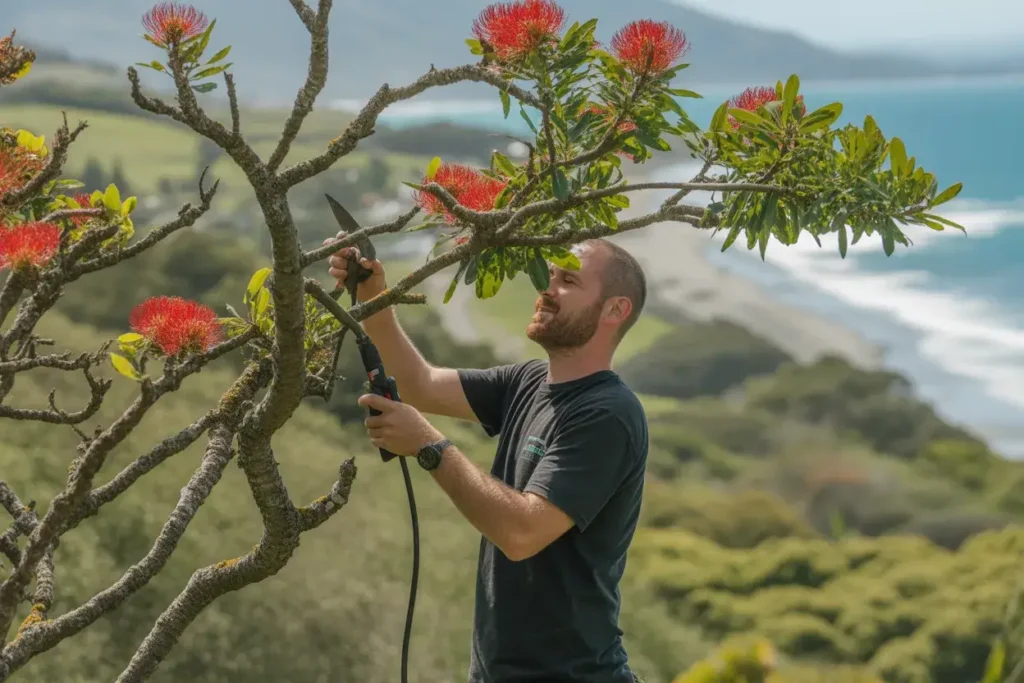
When Paraparaumu Properties Need Professional Tree Surgeons
Height and Access Challenges
Working above ground level introduces hazards that require professional training, appropriate equipment, and comprehensive safety systems to manage effectively.
Trees exceeding three metres height generally warrant professional attention for anything beyond minor outer canopy work accessible from ground level. Working at height without proper equipment and training creates serious injury risks that far outweigh potential service cost savings.
Power line proximity demands professional assessment and coordination with utility companies before any work proceeds. Even non-contact situations create electrical hazards requiring qualified expertise to manage safely whilst maintaining mandated clearance zones.
Confined space limitations including trees within courtyards, adjacent to buildings, or in densely planted areas complicate access and increase technical difficulty. Professional rigging techniques enable safe work in restricted spaces without property damage.
Overhanging structures create additional complexity where dropped material could damage roofs, vehicles, or other valuable property. Professional control techniques protect surrounding areas whilst enabling necessary tree work.
Difficult terrain including steep slopes or unstable ground requires specialised approaches to maintain worker safety whilst preventing environmental damage during operations. Professional assessment identifies site-specific hazards and develops appropriate responses.
Working over public spaces or neighbour properties introduces liability considerations requiring professional insurance coverage. Qualified tree surgeons carry comprehensive policies protecting property owners from potential third-party claims.
Tree Health Problems and Disease Management
Certain tree health situations exceed DIY capabilities, requiring professional diagnosis and intervention to prevent tree loss or manage safety hazards effectively.
Declining tree health without obvious cause warrants professional assessment to identify underlying problems. Complex interactions between environmental stress, pest pressure, and disease often require expert knowledge to diagnose accurately.
Fungal infections including bracket fungi, root rot pathogens, and foliar diseases may compromise structural integrity whilst requiring specific treatments. Professional identification enables appropriate responses whilst assessing whether trees remain safe to retain.
Pest infestations from scale insects, boring beetles, or other damaging organisms benefit from professional assessment determining treatment viability versus removal necessity. Early professional intervention often prevents minor problems from becoming major losses.
Root damage from construction activity, soil compaction, or underground utility installation may not show immediate symptoms but can compromise long-term tree stability. Professional assessment evaluates damage extent whilst developing appropriate management strategies.
Lightning strike damage creates complex injury patterns that may not be immediately apparent. Professional evaluation determines whether affected trees remain viable and structurally sound or present hazards requiring removal.
Sudden branch drop syndrome and other unexplained failures suggest structural problems warranting immediate professional assessment. These situations often indicate hidden defects requiring expert evaluation to determine ongoing safety.
Compliance and Regulatory Requirements
Kapiti Coast District Council regulations protecting significant indigenous vegetation and notable trees necessitate professional expertise for certain situations.
Protected indigenous vegetation clearance requires understanding which species and growing situations fall under regulatory protection. Professional assessment ensures compliance whilst identifying permit requirements when work affects controlled vegetation.
Notable tree schedules list specific specimens receiving heritage protection based on size, age, condition, or historical significance. Professional documentation and consent processes become necessary when work affects scheduled trees.
Resource consent applications for significant tree work require technical information that qualified tree surgeons can provide. Professional reports supporting applications demonstrate appropriate assessment whilst meeting council documentation requirements.
Archaeological considerations affect work near known historical sites or in areas with potential heritage values. Professional awareness of notification requirements prevents regulatory violations whilst protecting cultural heritage.
Boundary tree disputes benefit from professional third-party assessment providing objective technical information. Qualified reports assist property owners in resolving disagreements whilst ensuring trees receive appropriate care regardless of ownership complexities.
Insurance claim documentation requires professional assessment detailing damage extent, causation factors, and appropriate remedial work. Qualified tree surgeon reports support claim processes whilst ensuring proper repairs protect long-term tree health.
Tree Surgery vs General Tree Services: Understanding the Difference
Qualification and Training Requirements
Understanding professional qualification differences helps property owners select appropriately skilled practitioners for their specific tree care needs.
Qualified tree surgeons complete nationally recognised certification programmes requiring extensive practical training alongside theoretical knowledge. These structured qualifications ensure competency across technical skills essential for complex tree work.
General tree service providers may lack formal qualifications, relying instead on on-the-job experience without verified competency assessment. Whilst experienced practitioners may develop skills over time, absence of formal qualification provides no assurance of appropriate training.
Apprenticeship completion demonstrates commitment to professional development whilst ensuring supervised skill acquisition. Qualified tree surgeons following apprenticeship pathways gain breadth of experience across diverse situations under expert guidance.
Continuing education requirements maintain and update qualified tree surgeon knowledge throughout their careers. Mandatory professional development ensures practitioners stay current with evolving techniques and safety standards.
Safety certification including height safety training, chainsaw operation credentials, and first aid qualifications separate professional tree surgeons from unqualified operators. Comprehensive safety training protects both workers and property owners from preventable accidents.
Professional association membership including New Zealand Arboricultural Association affiliation demonstrates commitment to industry standards and ethical practice. Association members access resources supporting ongoing professional development whilst adhering to codes of practice.
Insurance and Liability Protection
Professional tree surgeon insurance coverage protects property owners from potential liabilities arising from tree work accidents or property damage during operations.
Public liability insurance covers third-party property damage and injury claims arising from tree work. Professional policies typically provide coverage exceeding one million dollars, protecting property owners from potentially devastating financial exposure.
Professional indemnity insurance covers claims arising from professional advice or recommendations. Qualified tree surgeons carrying this coverage demonstrate commitment to standing behind their professional assessments.
Workers’ compensation coverage protects employees injured during tree work operations. Comprehensive coverage ensures injured workers receive appropriate support whilst preventing claims against property owners.
Equipment insurance ensures professional tools and machinery maintain optimal condition. Regular equipment maintenance and replacement demonstrates commitment to safe, efficient operations using appropriate technology.
Verification procedures enable property owners to confirm insurance currency before work commences. Professional tree surgeons willingly provide documentation demonstrating comprehensive, current coverage.
Uninsured operators create significant risk exposures for property owners who may become liable for accidents or damage occurring during tree work. Even minor incidents can generate substantial costs when uninsured contractors lack resources to address problems they create.
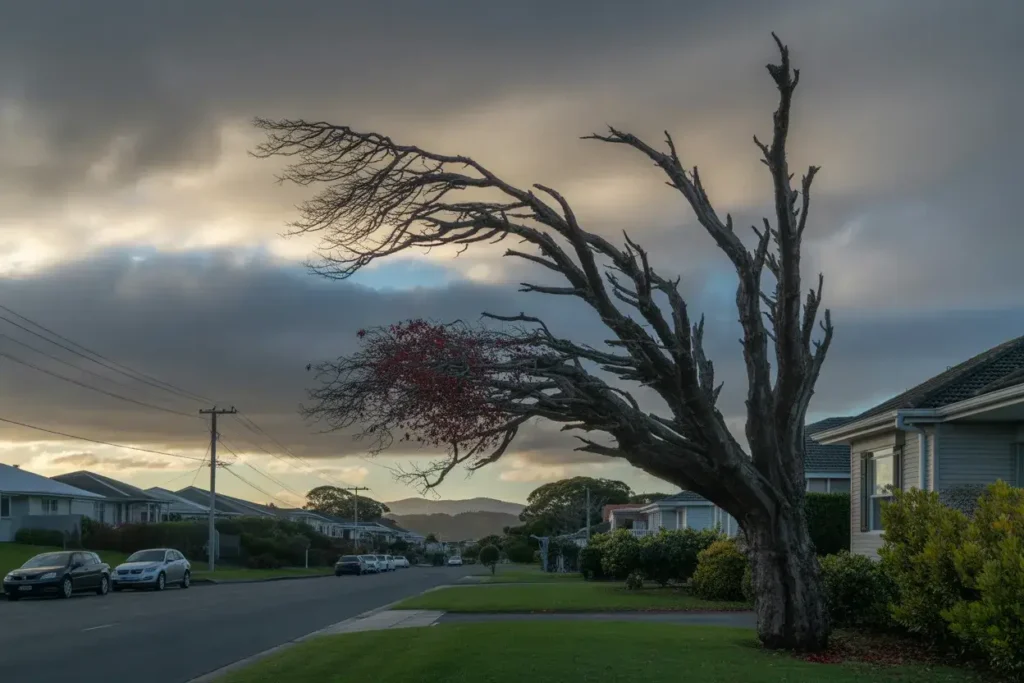
Benefits of Hiring Elite Arboriculture’s Tree Surgeons in Paraparaumu
Local Knowledge and Coastal Expertise
Paraparaumu’s unique environmental conditions create specific challenges that local tree surgery expertise addresses more effectively than generic services.
Coastal wind patterns affect tree structure, pruning approaches, and risk assessment throughout Kapiti Coast properties. Professional understanding of salt-laden westerly exposure enables appropriate interventions that build wind resistance whilst maintaining tree health.
Native species knowledge ensures culturally appropriate care for pōhutukawa, kōwhai, and other indigenous trees significant to our regional character. Specialised techniques respect natural forms whilst addressing practical property management needs.
Soil variation across Paraparaumu from coastal sands to heavier inland soils affects tree health and appropriate intervention timing. Local expertise recognises site-specific growing conditions influencing tree responses to surgery.
Seasonal timing considerations account for Paraparaumu’s specific climate patterns including late frost risk and spring rainfall variability. Professional scheduling optimises intervention timing for individual species and local conditions.
Community connection ensures services align with broader environmental values whilst meeting individual property needs. Local practitioners understand aesthetic standards and environmental priorities important to Kapiti residents.
Council relationship management streamlines consent processes and ensures compliance with local regulations. Established professional relationships facilitate efficient handling of protected tree situations and heritage considerations.
Safety Standards and Professional Equipment
Professional tree surgery operations maintain comprehensive safety systems protecting workers, property owners, and surrounding properties throughout complex tree work.
Height safety equipment including harnesses, ropes, and rigging systems meets current industry standards for fall protection. Regular inspection and replacement schedules ensure equipment reliability during critical operations.
Chainsaw and cutting tool maintenance follows manufacturer specifications and professional standards. Sharp, properly functioning equipment enables clean cuts whilst reducing operator fatigue and injury risk.
Personal protective equipment including helmets, eye protection, and cut-resistant clothing provides essential protection against common tree work hazards. Comprehensive PPE systems demonstrate commitment to worker safety.
Traffic management capabilities enable safe work near roadways, implementing appropriate controls protecting both workers and passing motorists. Professional traffic management planning prevents accidents whilst minimising disruption.
Emergency response preparedness including first aid training and communication systems ensures rapid, appropriate response to accidents should they occur. Comprehensive emergency planning minimises incident severity whilst protecting all parties.
Site protection measures prevent damage to gardens, driveways, and structures surrounding work areas. Professional operations include appropriate ground protection and debris management systems that leave properties clean and undamaged.
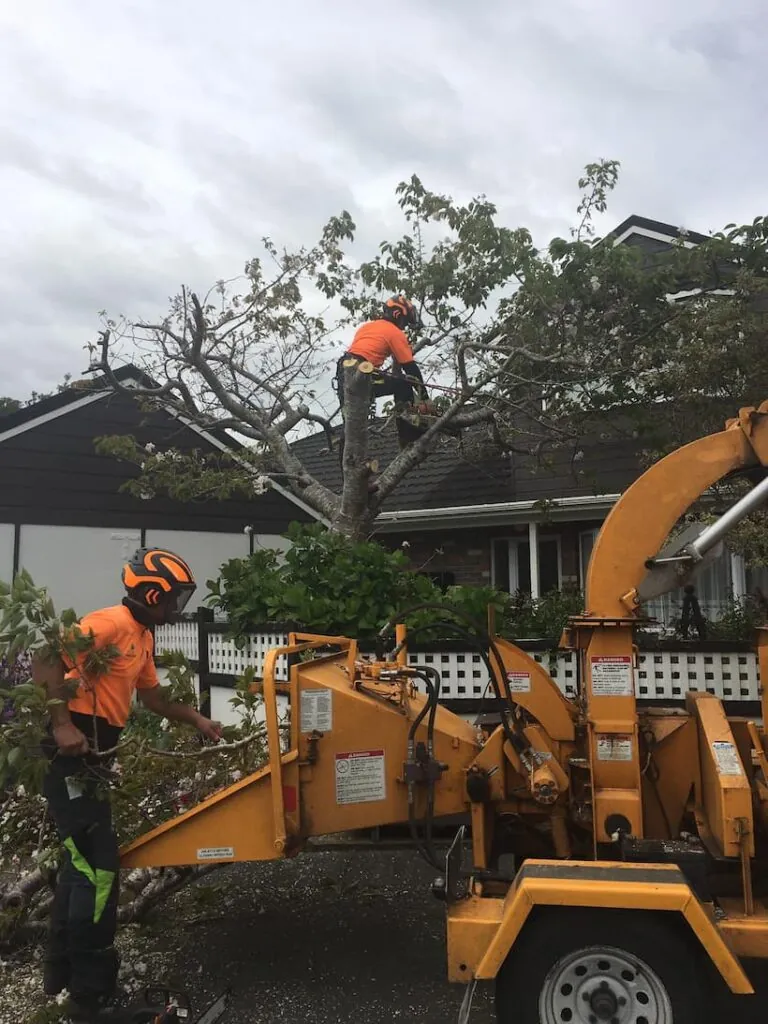
Long-Term Tree Health and Property Value
Professional tree surgery represents an investment in property value and landscape quality that pays dividends far beyond immediate intervention costs.
Structural improvement through appropriate pruning reduces future storm damage risk whilst extending tree lifespan. Professional interventions during formative years create strong frameworks requiring less intensive management throughout tree life.
Disease prevention and early intervention protect valuable specimens whilst avoiding expensive emergency removals. Regular professional assessment identifies developing problems when treatment remains most effective and affordable.
Aesthetic enhancement through skilled pruning maintains natural tree forms whilst managing size for property compatibility. Professional work preserves landscape value whilst addressing practical needs including view preservation and overhead clearance.
Safety assurance from professional assessment and appropriate interventions protects families and property from tree-related hazards. Regular professional attention identifies and addresses risks before they manifest as accidents or damage.
Property value protection recognises trees as valuable assets contributing to property appeal and market value. Professional care preserves these assets whilst preventing tree-related problems that could diminish property value or create sale obstacles.
Community responsibility through professional tree care maintains Paraparaumu’s coastal character whilst supporting environmental values important to our region. Quality tree care protects the green infrastructure making our community special.
Cost Considerations and Value of Professional Tree Surgery
Understanding Tree Surgery Pricing
Tree surgery costs reflect complexity, equipment requirements, qualifications, and risk factors rather than simple hourly rates applicable to general gardening services.
Assessment fees cover professional evaluation time, report preparation, and recommendation development. Upfront assessment investments ensure appropriate intervention planning whilst providing documentation useful for insurance or council purposes.
Complexity factors including tree size, access difficulties, proximity to hazards, and technical requirements significantly influence pricing. Challenging situations requiring specialised equipment or extended duration naturally command higher fees reflecting additional resources.
Disposal costs account for green waste processing, including chipping, transportation, and appropriate disposal. Volume of material removed and disposal facility fees contribute to overall project costs.
Emergency surcharges reflect after-hours availability and urgent response requirements. Storm damage and similar emergencies requiring immediate attention typically incur premium pricing reflecting scheduling disruption and urgency.
Consent processing assistance when work requires council approval adds value through professional documentation and application management. Expertise navigating regulatory requirements prevents delays whilst ensuring compliance.
Value comparison against potential losses from delayed intervention often demonstrates professional tree surgery as cost-effective investment. Tree failures causing property damage, removal of declining trees that could have been saved, and emergency situations that could have been prevented through professional assessment all generate costs exceeding preventive professional care.
Long-Term Cost Benefits
Professional tree surgery investment delivers ongoing returns through enhanced tree health, reduced emergency costs, and preserved property value over extended timeframes.
Preventive maintenance through regular professional attention identifies and addresses developing problems before they require expensive emergency interventions. Early disease treatment, structural pruning, and hazard management prevent costly crisis situations.
Tree lifespan extension through appropriate professional care preserves valuable landscape assets for decades. Mature tree replacement costs including specimen purchase, installation, and establishment care far exceed professional maintenance investments.
Property damage prevention through professional risk assessment and appropriate interventions avoids costly repairs from tree failures. Structural pruning, hazard limb removal, and declining tree management prevent damage events that could cost thousands.
Insurance premium impacts from demonstrated tree maintenance may reduce property insurance costs. Professional documentation of appropriate tree care demonstrates risk management that insurers recognise.
Liability protection through professional service provider insurance coverage prevents potentially devastating personal financial exposure. Single uninsured incident could generate costs exceeding lifetime tree care budgets.
Resale value enhancement from well-maintained landscape including professionally cared-for trees improves property marketability. Buyers value mature trees and professional care history demonstrating property quality and owner commitment.
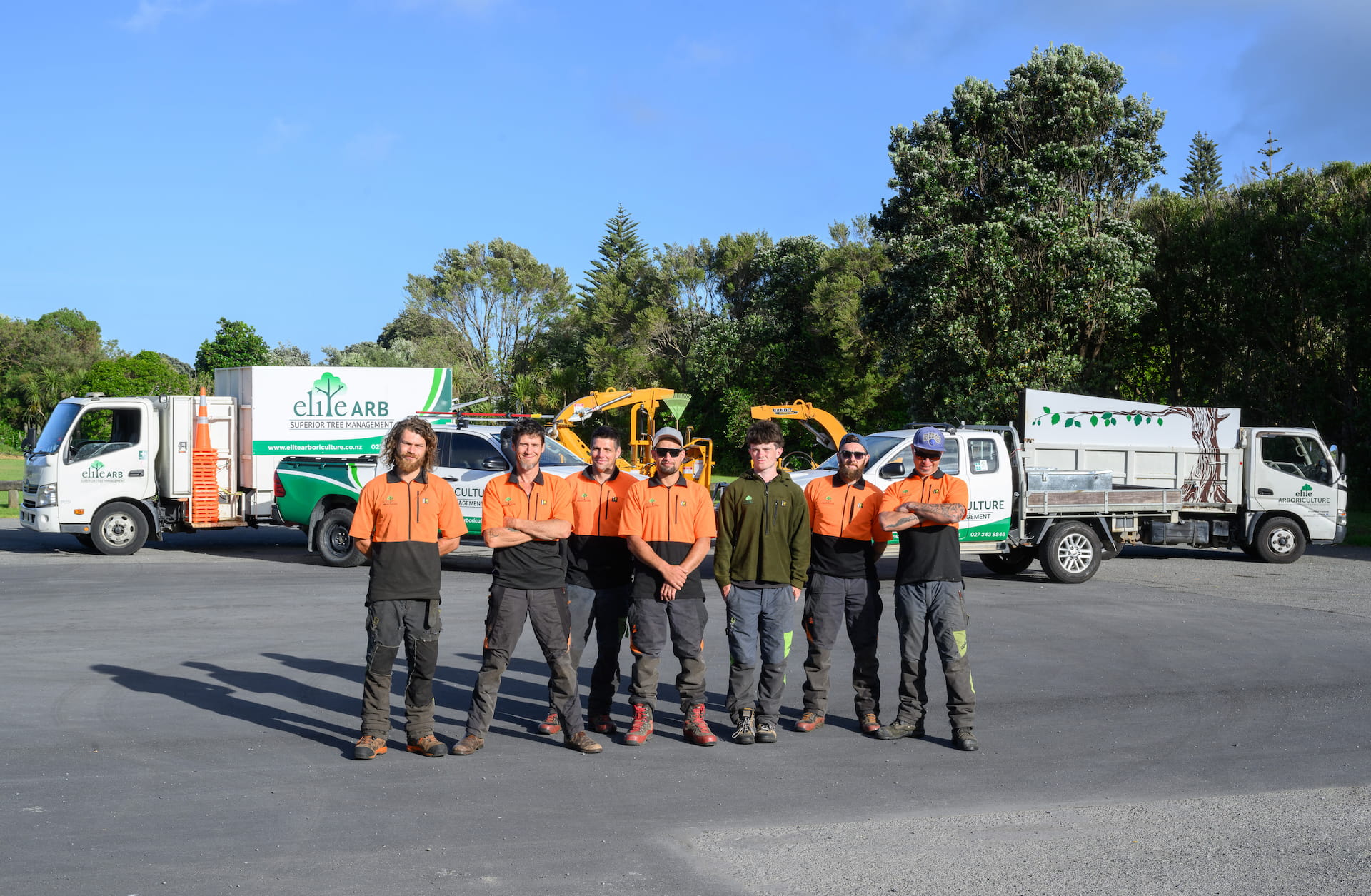
Conclusion
Professional tree surgery combines technical qualifications, specialised equipment, and practical expertise to safely manage complex tree care situations that extend beyond general gardening capabilities. Understanding when your Paraparaumu trees require qualified tree surgeon attention protects valuable landscape assets whilst ensuring safety for your property and community.
Elite Arboriculture’s qualified tree surgeons bring comprehensive credentials, local knowledge, and professional commitment to every tree care challenge throughout Paraparaumu and the wider Kapiti Coast region. Our dedication to excellence ensures your trees receive care that supports their health and beauty whilst meeting practical property management needs.
Don’t risk valuable trees or safety by attempting complex tree work without appropriate expertise. Professional tree surgery represents an investment in your property that delivers returns through enhanced safety, preserved tree health, and maintained landscape value.
Expert Tree Surgery Services Throughout Paraparaumu and Kapiti
Ready to discuss your tree care needs with qualified professionals? Elite Arboriculture provides comprehensive tree surgery services throughout Paraparaumu, combining certified expertise with local knowledge to deliver optimal results.
Our team of qualified tree surgeons understands the unique requirements of both native and exotic species whilst respecting the coastal conditions that make our region special.
Contact Jade at Elite Arboriculture on 027 343 8846 or email [email protected] to schedule your professional tree assessment with the Kapiti Coast’s trusted tree surgery specialists.
Frequently Asked Questions
What qualifications should I look for when hiring a tree surgeon in Paraparaumu?
Look for practitioners holding at least a New Zealand Certificate in Horticulture Services (Level 4) with arboriculture specialisation, which represents the industry-standard qualification for professional tree surgery. Higher qualifications including Level 5 certificates or the Level 6 Diploma in Arboriculture indicate advanced expertise. Additionally, ISA Certified Arborist credentials demonstrate international recognition and commitment to ongoing professional development. Always verify current certifications, comprehensive insurance coverage, and safety training before engaging any tree surgery services.
How do I know if my tree needs a professional tree surgeon or if I can handle the work myself?
Professional tree surgeons become essential when work involves heights above three metres, trees near power lines, large branch removal, or situations where falling material could damage property. Additionally, declining tree health without obvious cause, structural concerns including dead branches or weak attachments, and any work affecting protected or notable trees warrant professional expertise. If you’re uncertain about tree condition, appropriate techniques, or safety considerations, professional assessment provides peace of mind whilst ensuring appropriate interventions.
Frequently Asked Questions Continued
Are tree surgeons and arborists the same thing in New Zealand?
The terms tree surgeon and arborist are used interchangeably in New Zealand to describe qualified tree care professionals. Both terms refer to practitioners holding formal arboriculture qualifications and providing specialised tree services including assessment, pruning, disease management, and removal. Some practitioners prefer one term over the other, but professional qualifications, experience, and insurance coverage matter more than terminology when selecting tree care services.
Do I need council consent for tree work in Paraparaumu, and can tree surgeons help with this?
Certain trees in Paraparaumu require council consent before work proceeds, including those listed on the notable tree schedule and significant indigenous vegetation in specific circumstances. Professional tree surgeons familiar with Kapiti Coast District Council regulations can assess whether your situation requires consent and assist with application processes including technical documentation and supporting reports. Elite Arboriculture provides consent support services ensuring compliance whilst navigating regulatory requirements efficiently.
How much does professional tree surgery cost in Paraparaumu?
Tree surgery costs vary significantly based on tree size, access complexity, work type, and disposal requirements. Simple pruning on small accessible trees may cost a few hundred dollars, whilst complex large tree removals requiring specialised equipment can reach several thousand. Professional assessment provides accurate quotes based on specific circumstances. Remember that qualified practitioners with comprehensive insurance and appropriate equipment represent better value than cheaper unqualified operators who create potential liability exposures and may deliver poor outcomes requiring costly remediation.
Source Links
- New Zealand Arboricultural Association – https://www.nzarb.org.nz
- Careers New Zealand Arborist Information – https://www.careers.govt.nz/jobs-database/farming-fishing-forestry-and-mining/agriculture-horticulture/arborist/
- Otago Polytechnic Arboriculture Qualifications – https://www.op.ac.nz/study/horticulture/arboriculture
- Primary ITO Arboriculture Apprenticeships – https://www.primaryito.ac.nz/programme-listing-page/new-zealand-apprenticeship-in-arboriculture
- Kapiti Coast District Council Tree Regulations – https://www.kapiticoast.govt.nz/propertyhousingandrates/home-improvements-and-building/vegetation/cutting-down-vegetation/
- Department of Conservation Native Plants – https://www.doc.govt.nz/nature/native-plants/
- ISA Certified Arborist Programme – https://www.nzarb.org.nz/certified-arborist-exam
- Wintec Arboriculture Programmes – https://www.wintec.ac.nz/study-at-wintec/courses/arboriculture
- Elite Arboriculture Paraparaumu Services – https://elitearboriculture.co.nz/services/arborist-paraparaumu/
- New Zealand Plant Conservation Network – https://www.nzpcn.org.nz

